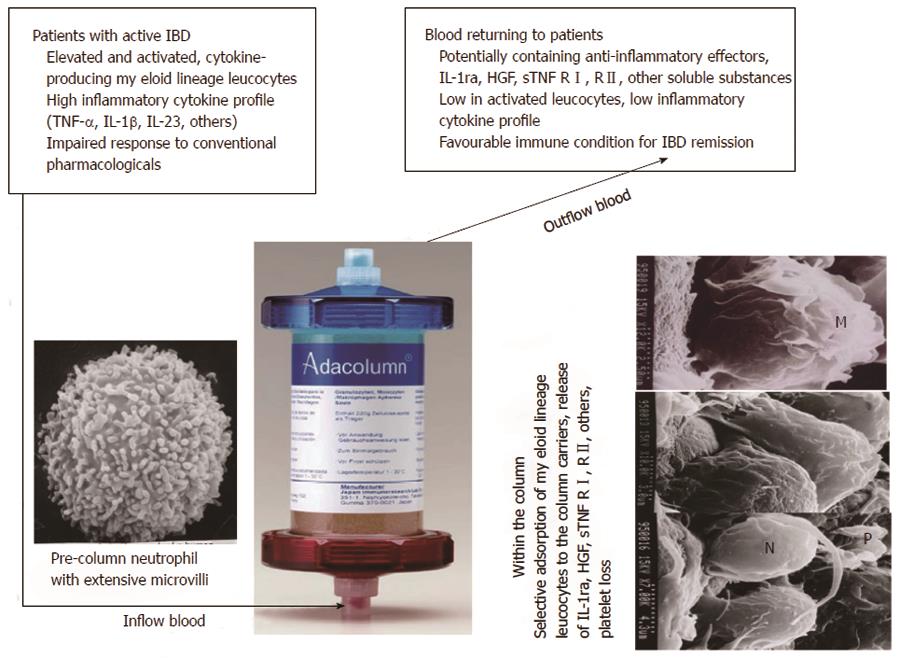Copyright
©2014 Baishideng Publishing Group Inc.
World J Gastroenterol. Aug 7, 2014; 20(29): 9699-9715
Published online Aug 7, 2014. doi: 10.3748/wjg.v20.i29.9699
Published online Aug 7, 2014. doi: 10.3748/wjg.v20.i29.9699
Figure 13 An idealistic view of the events attributed to therapeutic granulocyte and monocyte apheresis with the Adacolumn in patients with inflammatory bowel disease.
Scanning photomicrographs of leucocytes adsorbed onto a granulocyte and monocyte apheresis (GMA) carrier and the basic events, which follow on the surface of the carriers during GMA in clinical setting (see Figure 4 as well). Normal, non-activated and non-adherent neutrophils and monocytes/macrophages express extensive surface microvilli. The villi bear various receptors like tumour necrosis factor (TNF) receptors, and L selectin, which are shed upon adsorption of the cells to the carriers. Further as seen, adsorbed leucocytes undergo extensive release reaction. Up to now, interleukin-1 receptor antagonist (IL-1ra), hepatocyte growth factor (HGF), IL-10 and soluble TNF receptors have been measured. During GMA, the blood, which returns to patients via the column outflow line may be likened to a biologic cocktail containing a large number of soluble substances released by the adherent leucocytes. The adsorptive nature of GMA is thought to be the most intriguing feature of this non-pharmacological treatment intervention. M: Monocyte; N: Neutrophil; P: Platelet; IBD: Inflammatory bowel disease.
- Citation: Saniabadi AR, Tanaka T, Ohmori T, Sawada K, Yamamoto T, Hanai H. Treating inflammatory bowel disease by adsorptive leucocytapheresis: A desire to treat without drugs. World J Gastroenterol 2014; 20(29): 9699-9715
- URL: https://www.wjgnet.com/1007-9327/full/v20/i29/9699.htm
- DOI: https://dx.doi.org/10.3748/wjg.v20.i29.9699









